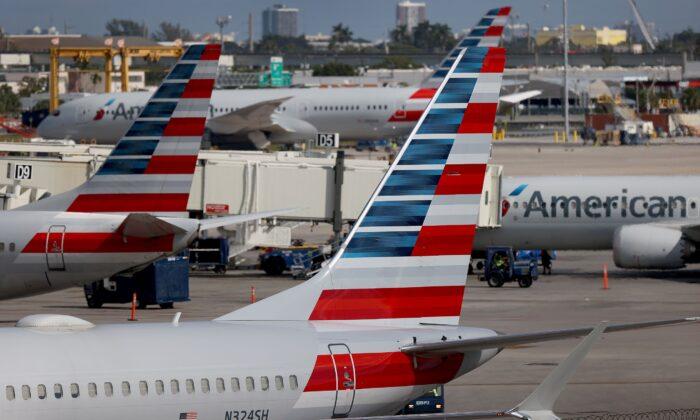U.S. airline traffic rebounded last year, flying 670.4 million passengers in 2021, with attendance up 83 percent over 2020 levels, according to the Transportation Department on Feb. 14.
However, preliminary data showed that airline passenger volume is still below pre-pandemic levels.
The report said that U.S. airline companies carried 303.6 million more passengers in 2021, but 245.9 million fewer than in 2019, a drop of 27 percent.
The total number of passengers carried by U.S. airlines at the height of the pandemic was down by 60 percent, a drop of 549 million passengers from 2019, the lowest levels seen since 1984.
The airline industry had gradually been recovering for the past year, with disruptions such as the arrival of the Delta and Omicron variant in the Summer and Winter respectively.
Air travel restrictions, global lockdowns, COVID passes, mask mandates, and fear of contagion put a severe dent in travel plans.
The U.S Congress awarded domestic airlines a total $54 billion in government assistance for payroll costs at the start of the CCP pandemic, which eventually expired in September 2021.
The Atlanta-based airline saw its planes average at 69 percent full in 2021, down from the average of 86 percent full in 2019.
U.S. domestic flights, which once accounted for 88 percent of all passengers in 2019, had increased to 91 percent of all passengers in 2021 due to less international travel.
International flights had accounted for 9 percent of U.S. airline traffic before the pandemic but had fallen by 60 percent in 2020 from 2019 levels.
Passengers flying international are still significantly limited by widespread travel restrictions although numbers have improved by 15 percent from 2020.
Last December, U.S. domestic carriers flew 66.3 million passengers, 118 percent more than the same month the year before but 16 percent less than in December 2019.
The trade association said that business travel is still down about 51 percent compared to pre-pandemic levels, while its member airlines had been operating at 14 percent below pre-pandemic levels in January.
The Transportation Security Administration said in the week ending Feb. 13 that it screened 24 percent less passengers from 2019 levels.
Last month, American Airlines and United Airlines announced that a recovery in passenger traffic was likely to resume in March after setbacks caused by the Omicron variant.
Airlines around the world are currently optimistic that international air travel will rebound in the spring and summer of this year as the Omicron variant diminishes.






Friends Read Free